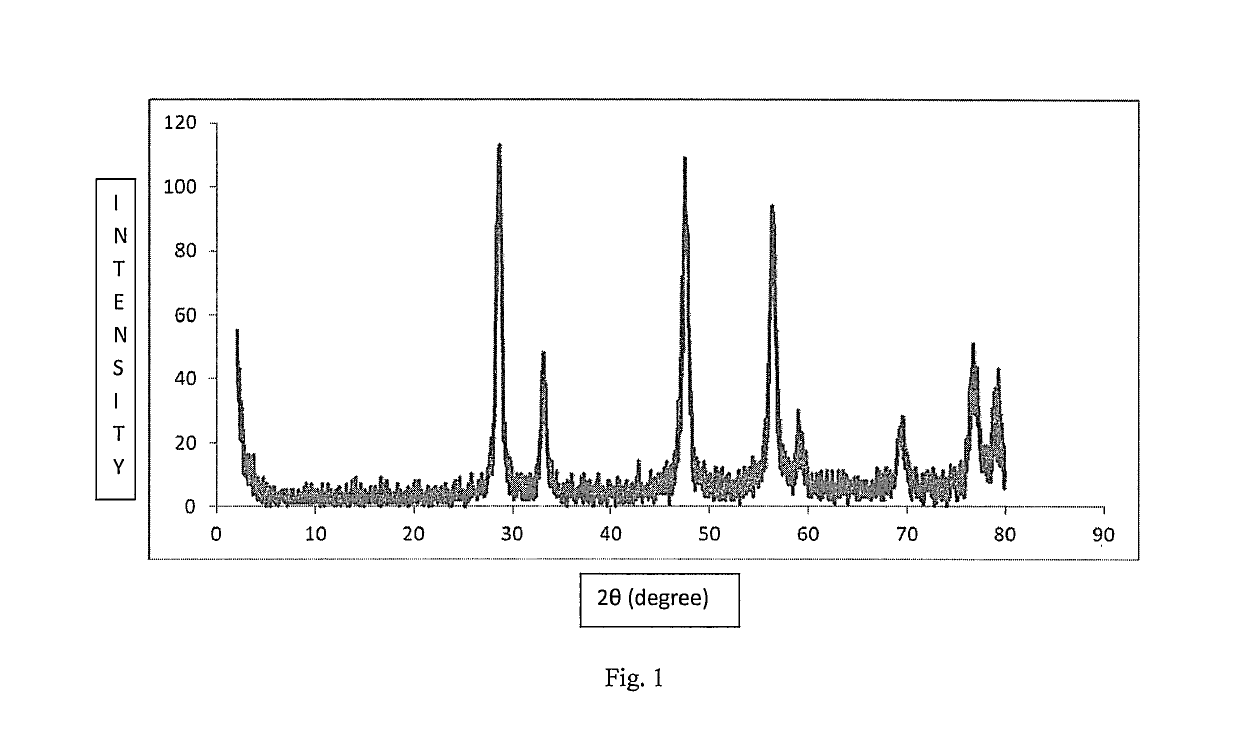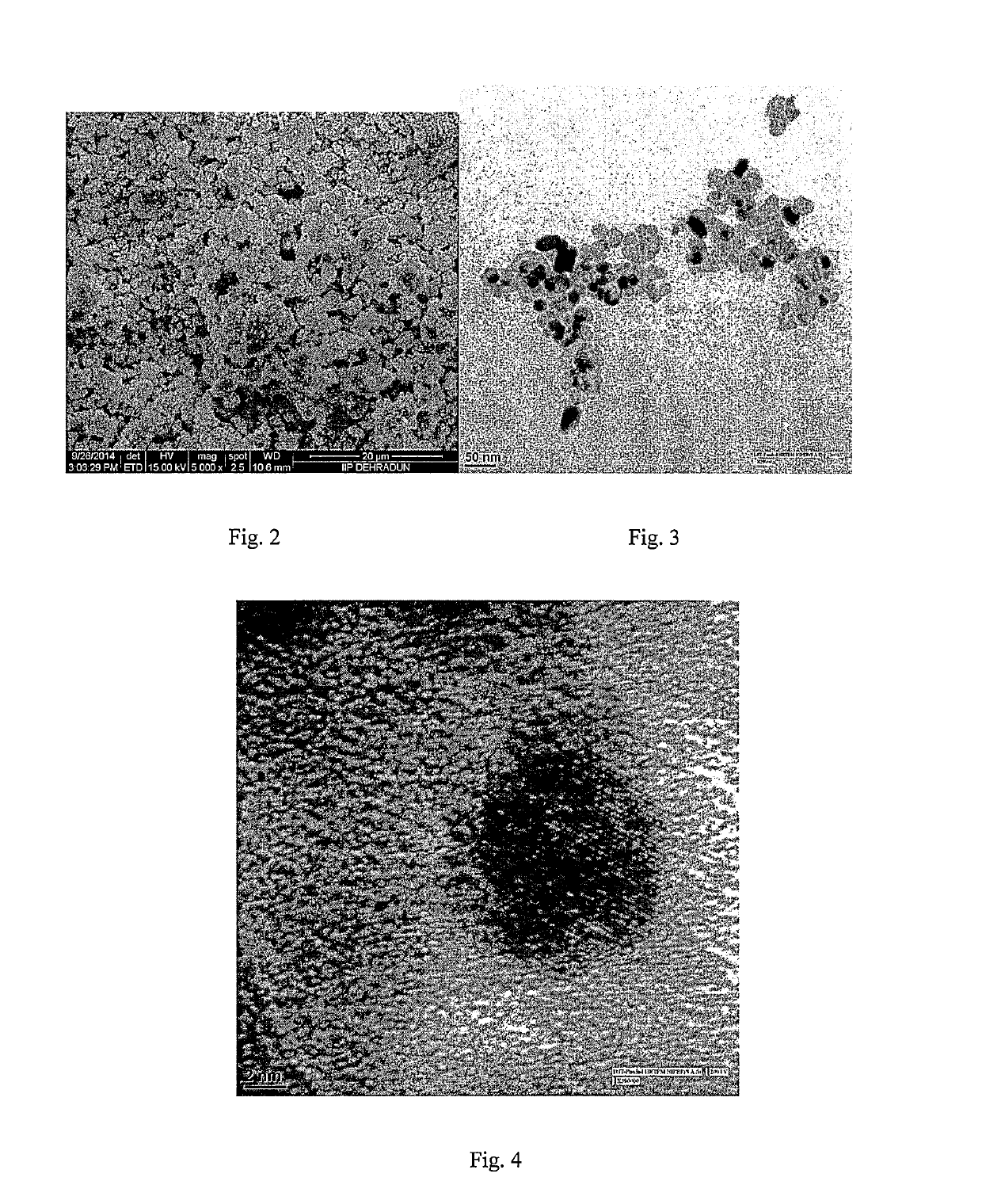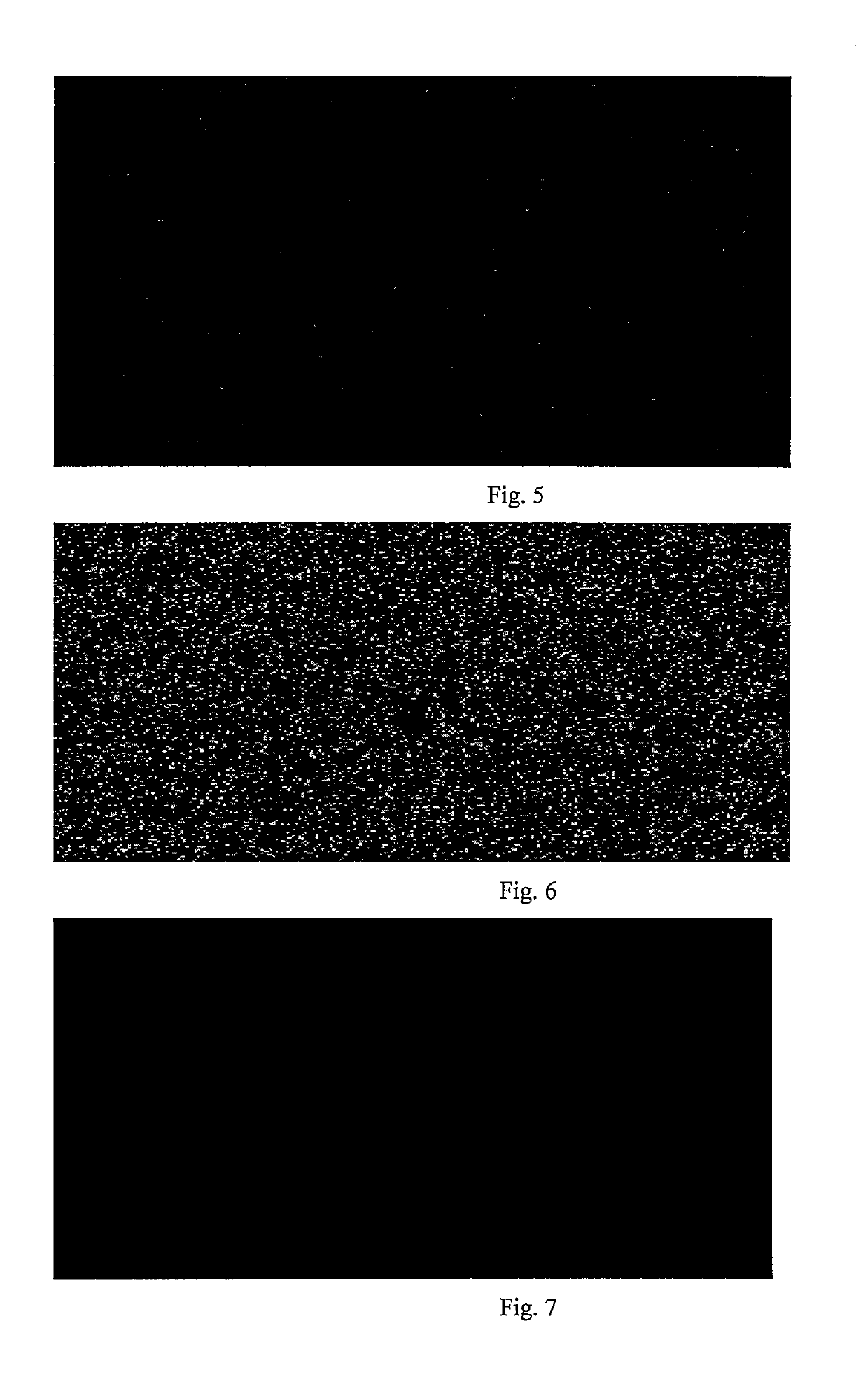Catalyst for carbon monoxide oxidation and process for the preparation thereof
a carbon monoxide and catalyst technology, applied in the direction of catalyst activation/preparation, physical/chemical process catalysts, metal/metal-oxide/metal-hydroxide catalysts, etc., can solve the problems of high reaction temperature, poor catalyst activity, and use of ir as catalyst, etc., to achieve easy preparation and economical carbon dioxide production
- Summary
- Abstract
- Description
- Claims
- Application Information
AI Technical Summary
Benefits of technology
Problems solved by technology
Method used
Image
Examples
example 1
on of 5% Cu on Cerium Oxide Support
[0067]Cu nanoparticles on cerium oxide support were prepared hydrothermally. All chemicals were used without further purification. Catalyst synthesis was carried out under ambient conditions. In a typical preparation method, 0.5289 g CuCl2 and 10.2823 g CeCl3.7H2O were dissolved in 150 ml by stirring that gave a light blue solution. The pH of the solution was measured by pH Meter, which was standardised for pH measurement before use. The ammonia solution was added drop by drop gradually until the pH of the solution was 8. Then alcoholic solution of CTAB (50% aqueous alcohol) was added in that mixture under vigorous stirring condition (2000 rpm) for half an hour to form gel. Then alcoholic solution of Polyvinylpyrrolidone (PVP) was added under stirring condition. Stirring was continued for 2 h. All the reagents were used maintain the ratio Cu:CTAB:PVP:H2O=0.25:0.1875:0.0937:150. The resulting mixture was treated hydrothermally in a Teflon lined stai...
example 2
on of 10% Cu on Cerium Oxide Support
[0069]Cu nanoparticles on cerium oxide support were prepared hydrothermally. All chemicals were used without further purification. Catalyst synthesis was carried out under ambient conditions. In a typical preparation method, 1.0579 g CuCl2 and 9.7412 g CeCl3.7H2O were dissolved in 150 ml by stirring that gave a light blue solution. The pH of the solution was measured by pH Meter, which was standardised for pH measurement before use. The ammonia solution was added drop by drop gradually until the pH of the solution was 8. Then alcoholic solution of CTAB (50% aqueous alcohol) was added in that mixture under vigorous stirring condition (2000 rpm) for half an hour to form gel. Then alcoholic solution of PVP was added under stirring condition. Stirring was continued for 2 h. All the reagents were used maintain the ratio Cu:CTAB:PVP:H2O=0.5:0.375:0.1875:150. The resulting mixture was treated hydrothermally in a Teflon lined stainless steel autoclave (10...
example 3
[0070]The example describes the effect of time on conversion. The product analysis presented in Table-1.
Catalyst: 0.50 g
Cu:CeO2 weight ratio in the catalyst=5:95.
Process pressure: 1 atm.
Process temperature: 50° C.
Gas hourly space velocity (GHSV): 7500 ml g−1 h−1
Reaction time: 100 h
O2:CO:He=5:10:85 (mol %)
[0071]
TABLE 1Effect of time on conversion of carbonmonoxide and oxidation of carbon monoxideTemperatureGHSVCarbon monoxideHour(° C.)(mlg−1h−1)Conversion (%)(h)4775001001047750010020477500100404775001006047750010080477500100100
PUM
| Property | Measurement | Unit |
|---|---|---|
| temperature | aaaaa | aaaaa |
| temperature | aaaaa | aaaaa |
| temperature | aaaaa | aaaaa |
Abstract
Description
Claims
Application Information
 Login to View More
Login to View More - R&D
- Intellectual Property
- Life Sciences
- Materials
- Tech Scout
- Unparalleled Data Quality
- Higher Quality Content
- 60% Fewer Hallucinations
Browse by: Latest US Patents, China's latest patents, Technical Efficacy Thesaurus, Application Domain, Technology Topic, Popular Technical Reports.
© 2025 PatSnap. All rights reserved.Legal|Privacy policy|Modern Slavery Act Transparency Statement|Sitemap|About US| Contact US: help@patsnap.com



